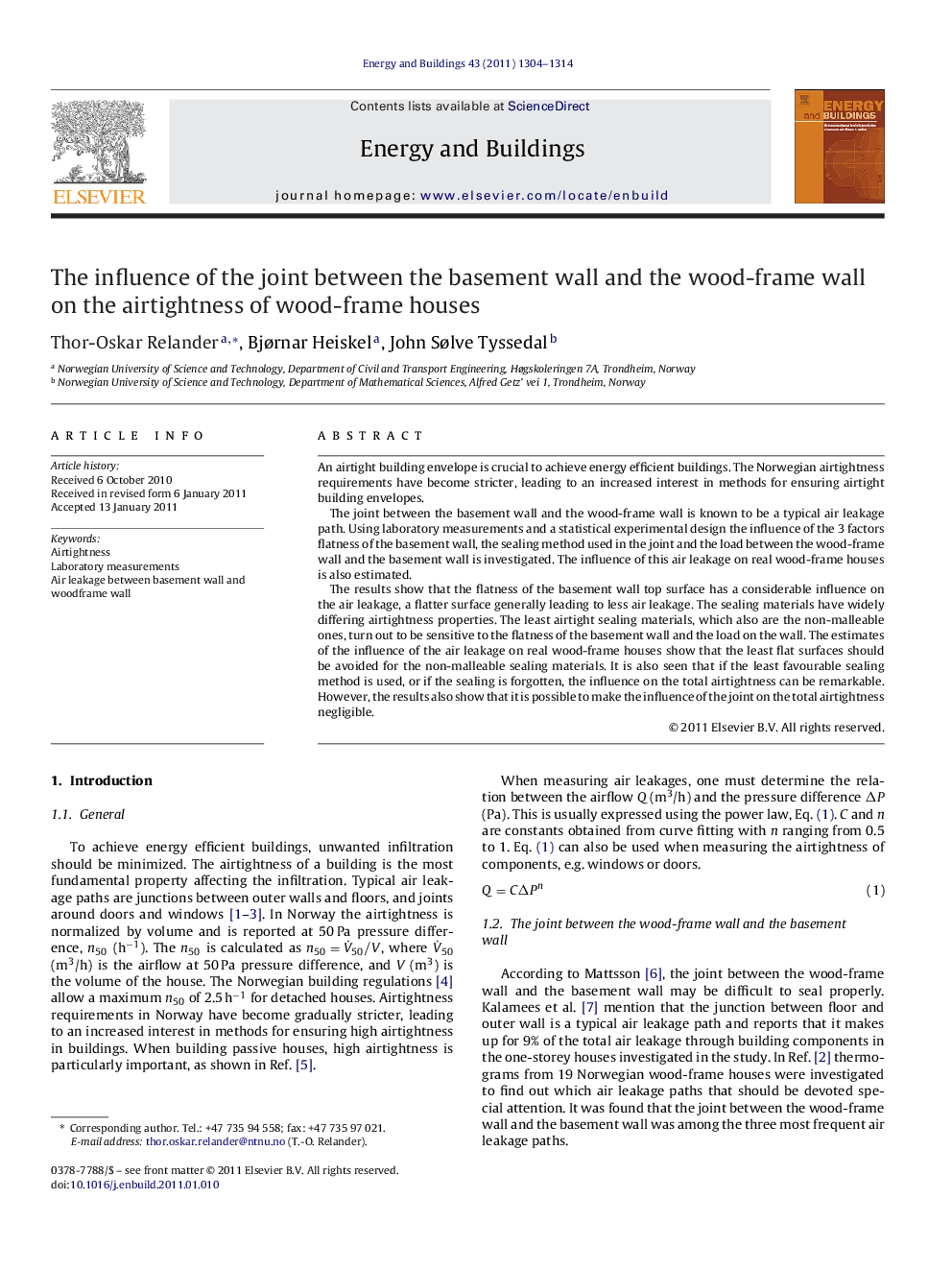| Article ID | Journal | Published Year | Pages | File Type |
|---|---|---|---|---|
| 264641 | Energy and Buildings | 2011 | 11 Pages |
An airtight building envelope is crucial to achieve energy efficient buildings. The Norwegian airtightness requirements have become stricter, leading to an increased interest in methods for ensuring airtight building envelopes.The joint between the basement wall and the wood-frame wall is known to be a typical air leakage path. Using laboratory measurements and a statistical experimental design the influence of the 3 factors flatness of the basement wall, the sealing method used in the joint and the load between the wood-frame wall and the basement wall is investigated. The influence of this air leakage on real wood-frame houses is also estimated.The results show that the flatness of the basement wall top surface has a considerable influence on the air leakage, a flatter surface generally leading to less air leakage. The sealing materials have widely differing airtightness properties. The least airtight sealing materials, which also are the non-malleable ones, turn out to be sensitive to the flatness of the basement wall and the load on the wall. The estimates of the influence of the air leakage on real wood-frame houses show that the least flat surfaces should be avoided for the non-malleable sealing materials. It is also seen that if the least favourable sealing method is used, or if the sealing is forgotten, the influence on the total airtightness can be remarkable. However, the results also show that it is possible to make the influence of the joint on the total airtightness negligible.
